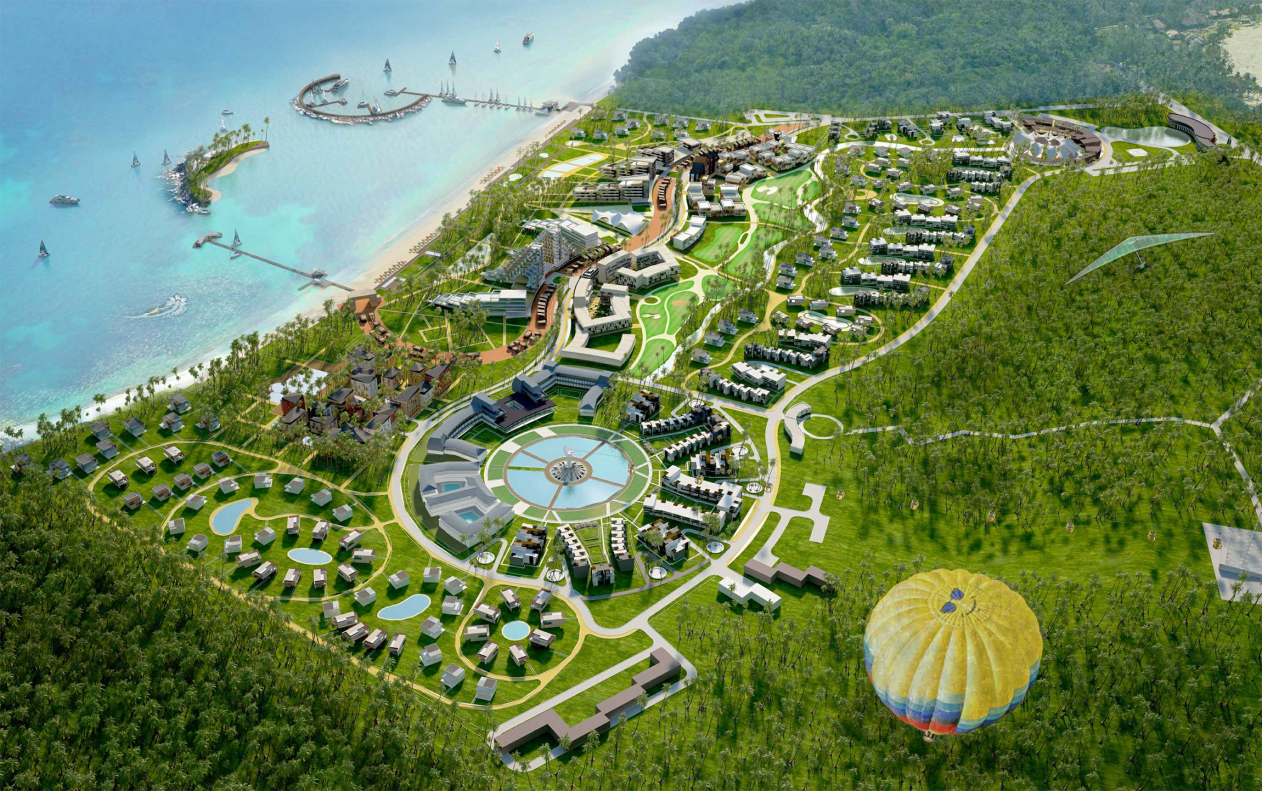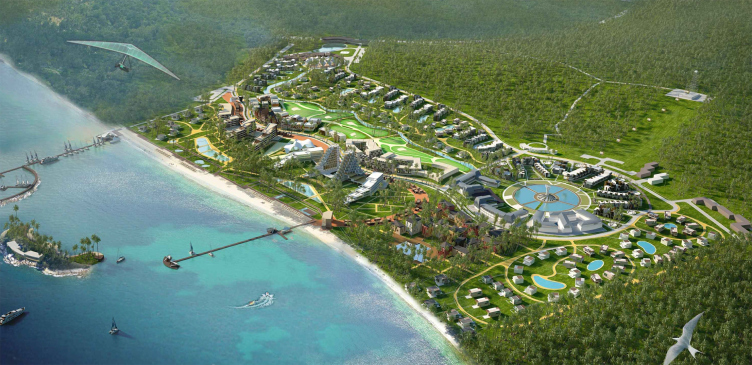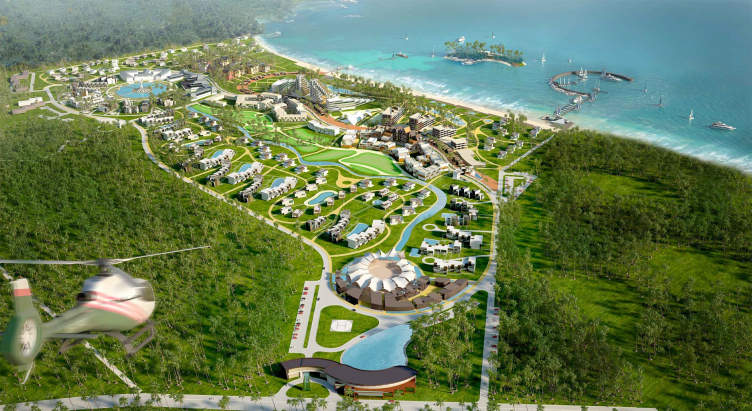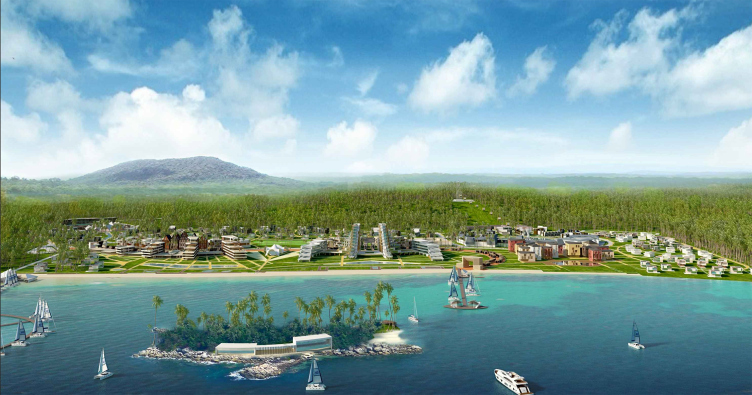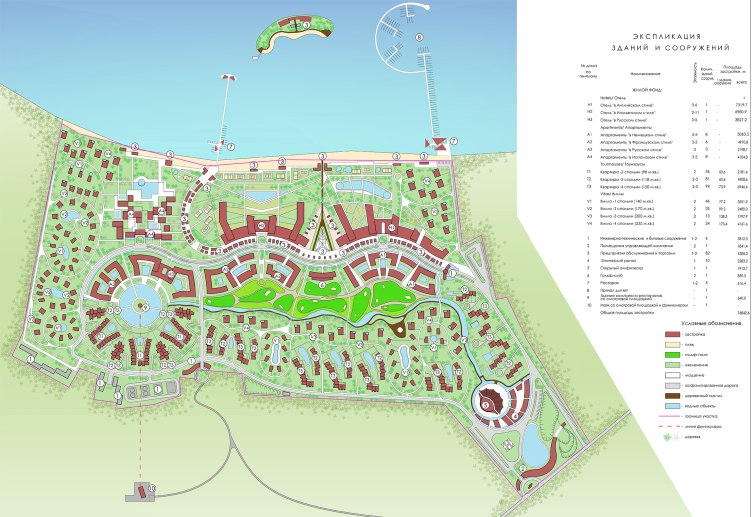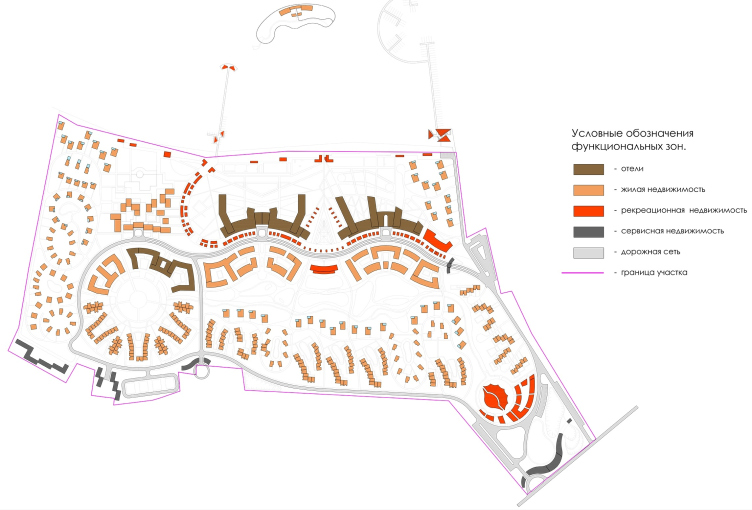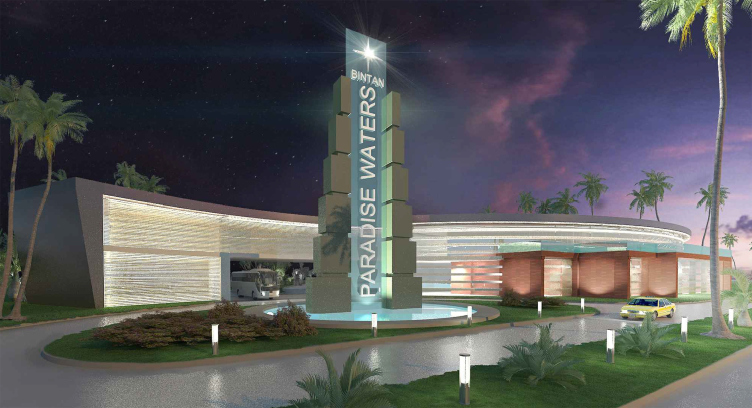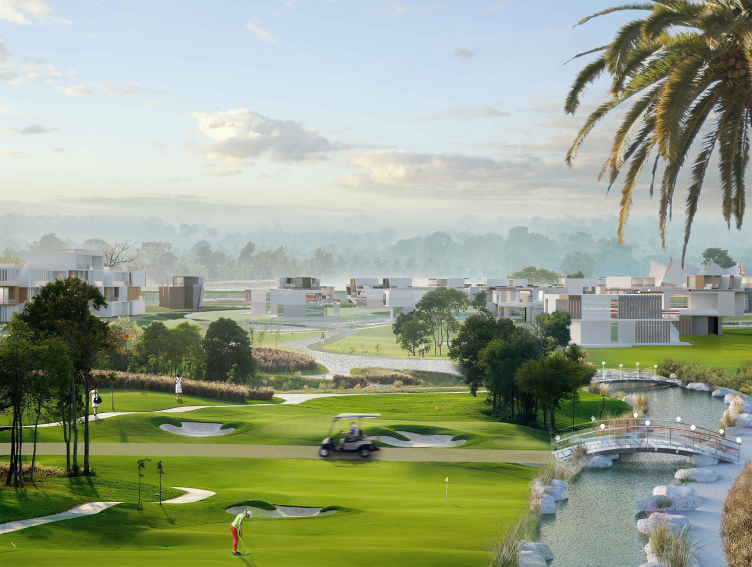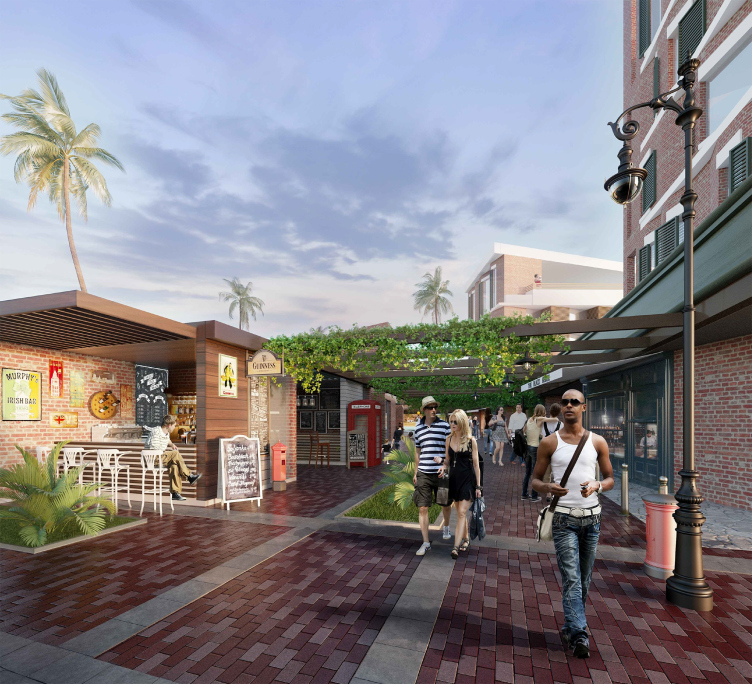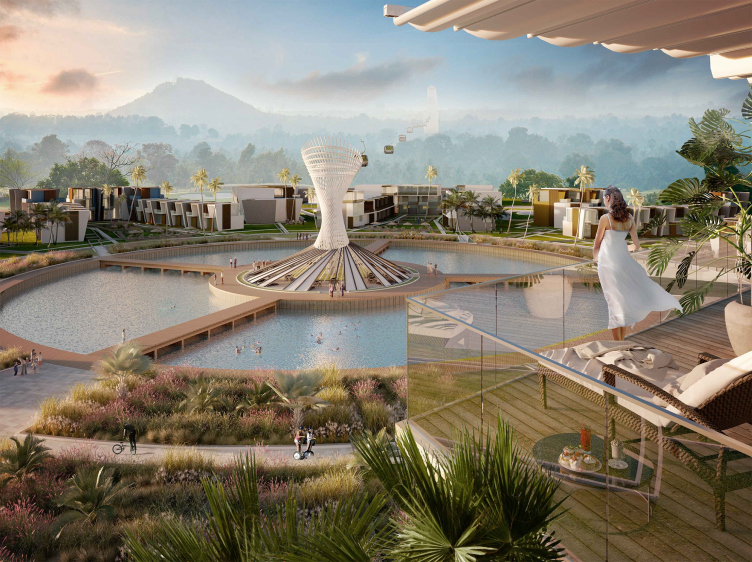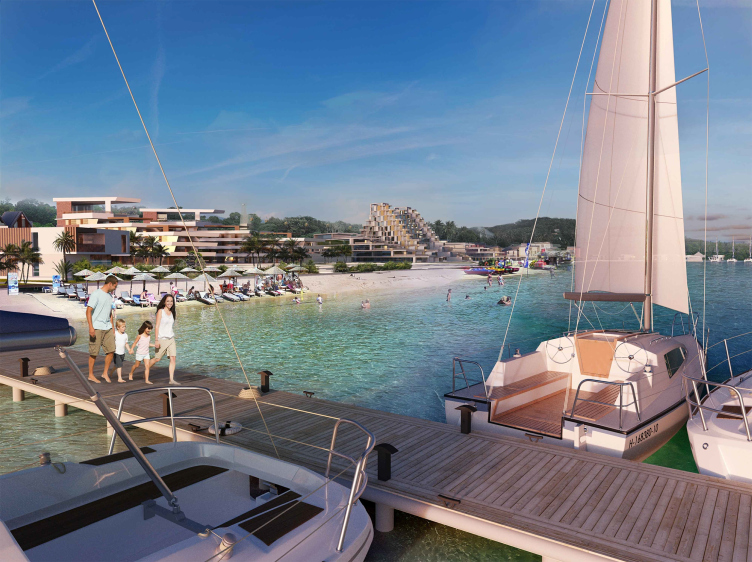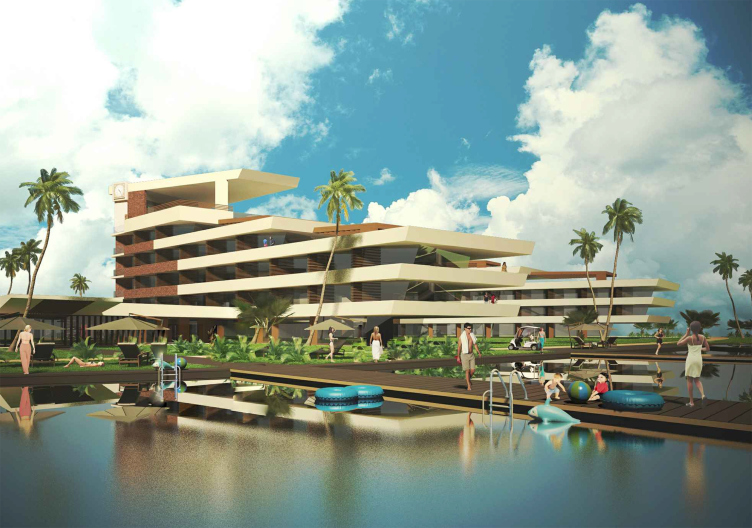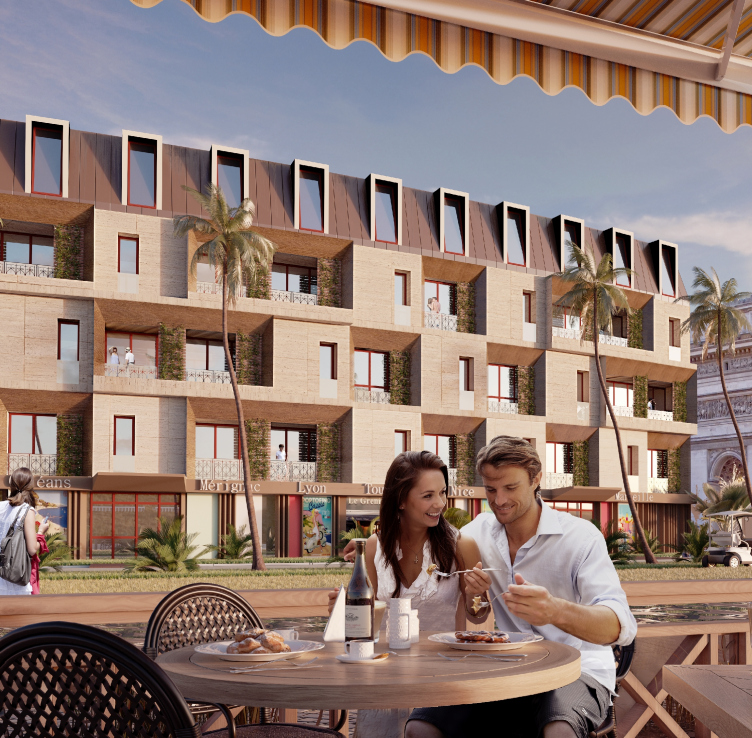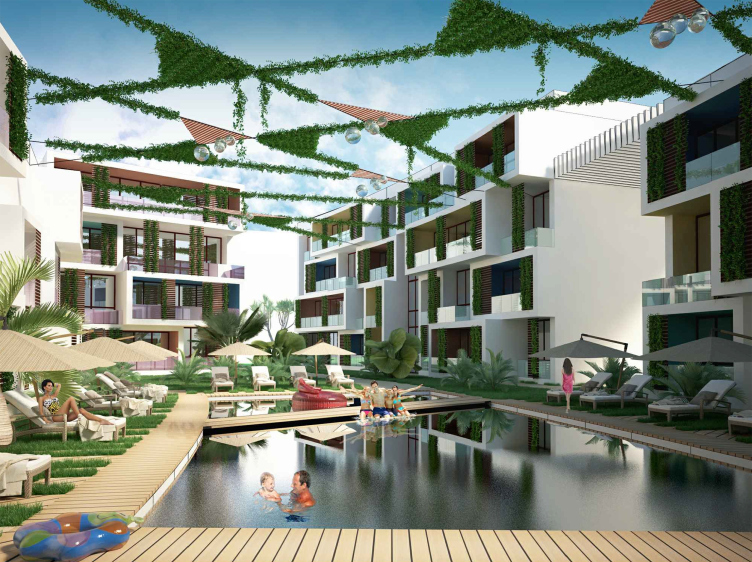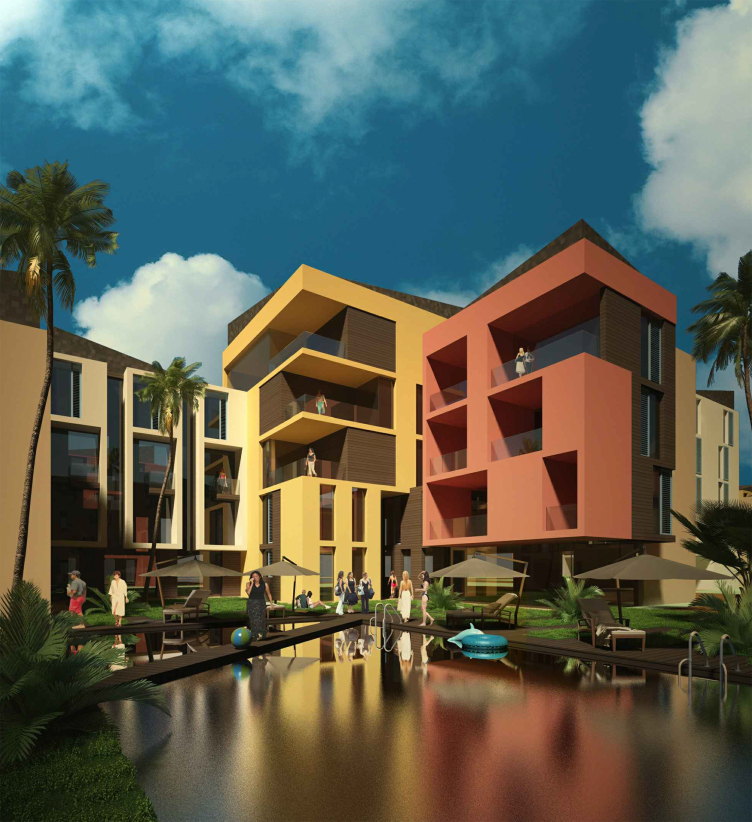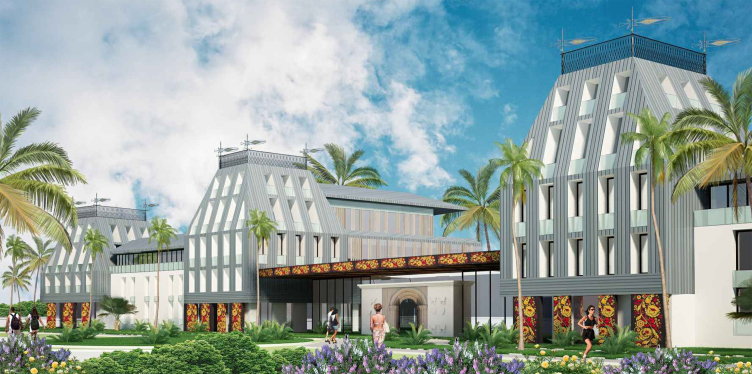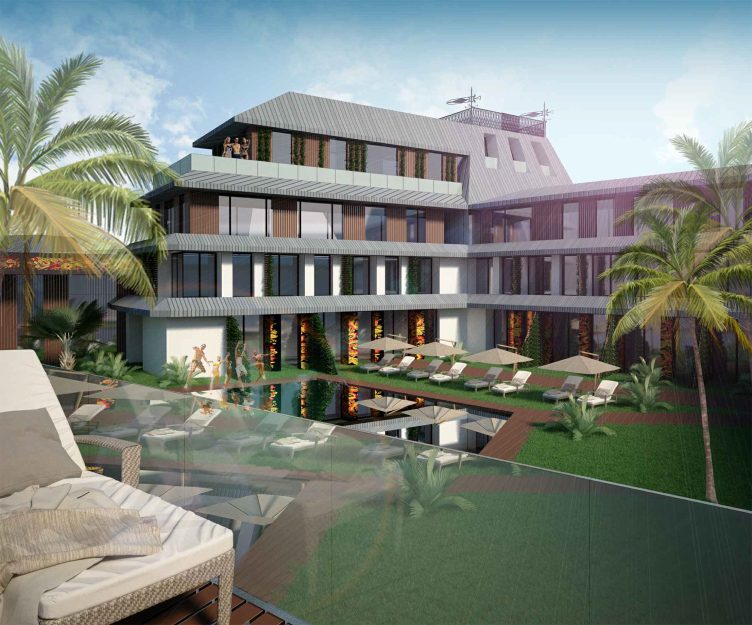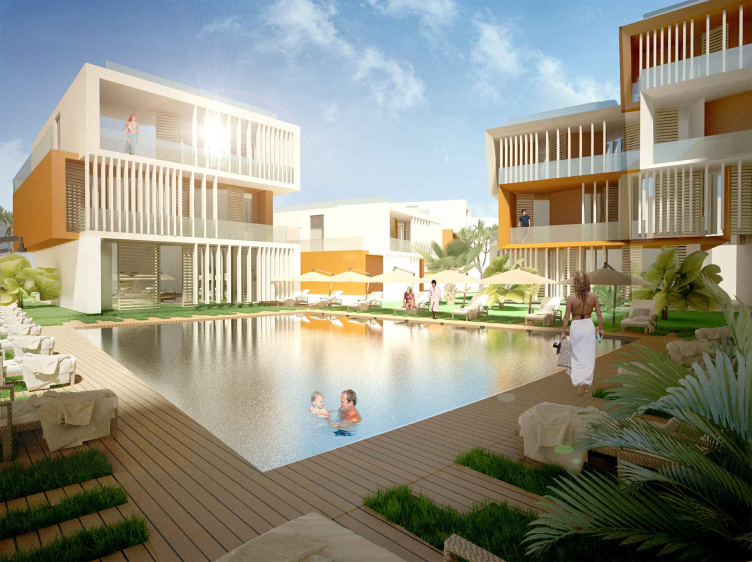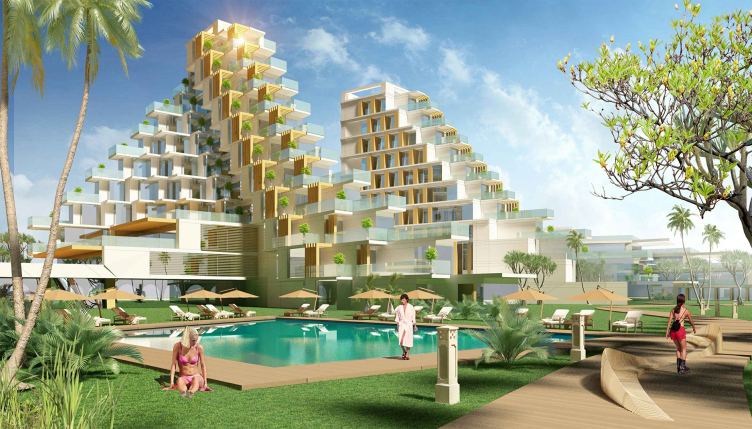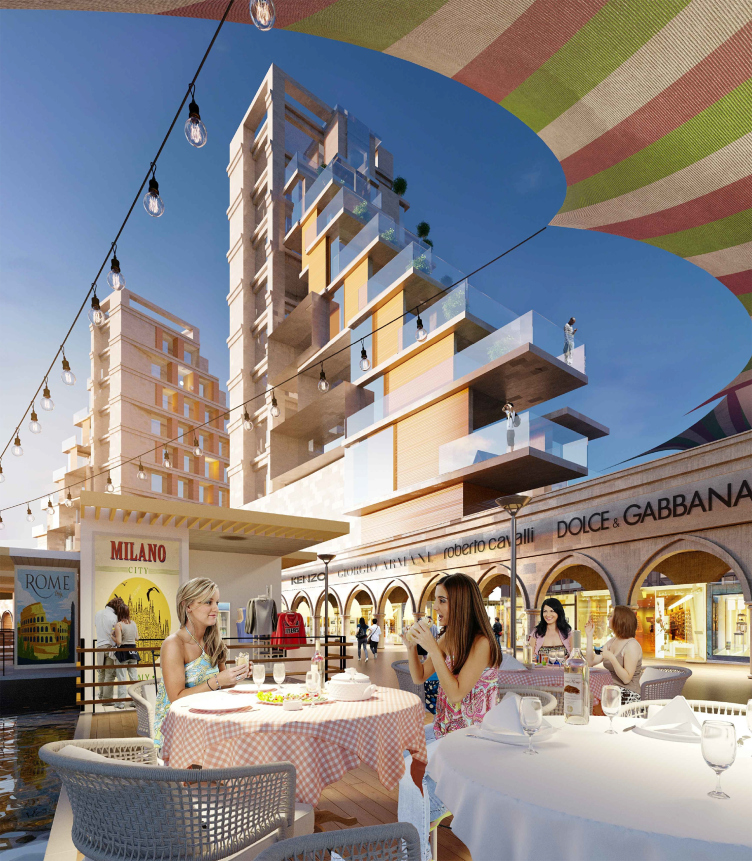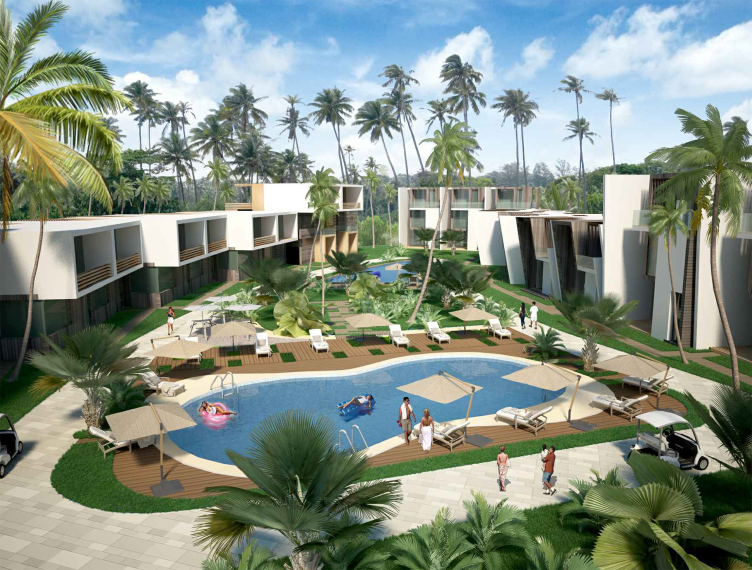In the north of Indonesia, on the shore of the South China Sea, on the east side of the Bintan Island, the firm’s client, “National Investment Alliance”, has purchased a 54-hectare land plot with a purpose of building a seaside resort there. Apart from the virgin “paradise” nature of white sand seaside and jungle, the island can only offer poor Indonesian villages and a few hotels for tourists, as well as an odd shop or an unpretentious restaurant. The investor’s plan was about building a full-fledged self-sufficient seaside resort with a thought-out environment chiefly catering for the residents of Singapore, which is but a forty minutes’ ferry trip away and for the Chinese tourists who traditionally visit these parts.
The Vladimir Bindeman studio was to create an architectural and town planning proposal because the owner of this land was going to sell it by individual plots, retaining, however, the right to the overall management of the territory, thus avoiding the risk of chaotic construction. In order to come up with a beautiful marketing spin, the client proposed to create on this island, which is exotic for Europeans, the kind of environment that would be unusual for the residents of the Southeast Asia, dedicating individual hotels to recognizable architectural images of the European countries. What the architects feared most of all was repeating the Venetian Las Vegas (a Venturi project that became a symbol of postmodernism); the last thing they wanted to do was stuffing the resort with diminished copies of the famous European buildings the way it is done at Turkish resorts. Ultimately, Vladimir Bindeman was able to convince the client to stick more to the modernist architecture of Europe with an odd inclusion of traditional motifs. Six countries were selected: Great Britain, France, Germany, Italy, France, and Russia. In addition, there was a task of dividing the housing typology-wise: traditional hotels with hotel rooms, apartments, townhouses, and villas. This yielded two types of classifications – by the national architecture and by the property type. The only task that was left was distributing them over the seaside. As a result, for the first line, the closest to the sea, mostly the hotels (and not the villas) were chosen, because they are in demand in every season, and, partially, the apartments. Thus, the first line was occupied by the English, Italian, and Spanish clusters, the second – by the Russian, French, and German ones, and the third, which is the closest to the jungle, by the houses “of no national origin”.
Development of the territory of "Paradise Waters" resort. Overview 3 © Arhitekturium
Development of the territory of "Paradise Waters" resort. Overview 2 © Arhitekturium
Development of the territory of "Paradise Waters" resort. Overview 1 © Arhitekturium
Development of the territory of "Paradise Waters" resort. Overview 5 © Arhitekturium
Development of the territory of "Paradise Waters" resort. Master plan © Arhitekturium
Development of the territory of "Paradise Waters" resort. The functional scheme © Arhitekturium
Development of the territory of "Paradise Waters" resort. The entrance group © Arhitekturium
The territory of the resort is divided into 17 land plots. The entrance is situated at the southeast corner of the land site. At the entrance, there is a wave-shaped building of the management company, a water reservoir, and a venue for public events that otherwise serves as the marketplace of the local goods.
Development of the territory of "Paradise Waters" resort. The golf course © Arhitekturium
Closer to the sea, there runs a more urbanized strip: hotels and apartments. In the center, there is a string of golf courses, golf being a popular sport here.
Development of the territory of "Paradise Waters" resort. The pedestrian street next to the hotel © Arhitekturium
Closer to the jungle, the buildings stand not so densely packed – these are groups of villas and townhouses, while behind the drive, in the forest, really, there are the employees’ dormitories. Between the first and the second lines, there is a pedestrian street – the resort’s main promenade with diverse infrastructure: restaurants, souvenir stands, gear rental points, travel agents, and massage salons. The entire street is covered by an awning engulfed in vining plants that create more shade.
Development of the territory of "Paradise Waters" resort. The cable car © Arhitekturium
The street was designed as being a long and winding one – not only for the sake of picturesqueness (although this was one of the reasons) but also because of the fact that at a seaside resort people usually take their time, and they do not have to necessarily see the end of the street’s perspective in order to get their bearings. The whole master plan mostly consists of smooth and soft lines – for the same reason. The streets are either paved with paving stones or covered with boardwalks.
Due to the fact that the climate is hot here, an easy access to the water was a necessary condition. Alongside the pedestrian street, a little man made river flows. Numerous creeks and pools of different shapes are surrounded by the groups of townhouses and apartment hotels. Most of the villas have, of course, swimming pools of their own.
Development of the territory of "Paradise Waters" resort. View from the pier © Arhitekturium
In terms of recreational infrastructure, the island has two piers (the existing one and the new marina for the yachts) and a cable car that takes the tourists up to the mountain for eco-tourism.
Development of the territory of "Paradise Waters" resort. The "English" hotel, view from the pedestrian street © Arhitekturium
***
Creating the architectural and town-planning concept of a seaside resort with a national theme is surely an interesting task for the architects, and there are two reasons for that. First of all, it is always an exciting challenge to delve into the national character of architecture. Because one man’s meat is another man’s poison, and the Italian “la Dolce Vita” is obviously different from the harshness of Spanish conquistadors. And in this specific instance the architects had to demonstrate the national character in postmodernist architecture, which is a tall order by definition – because postmodernism is essentially a globalist style developed by a pool of international “star” architectural companies, and it is – expectably – pretty much the same throughout the world. However, as it turned out, there are still some national features to it...
The architects were able to solve the “national question” chiefly at the expense of nation-specific materials, colors, and, to some extent, forms. In the English hotel it is red brick walls with white inclusions, the architecture itself being rather general and neutral, with a few allusions to the Big Ben and the classic red telephone booth. From the side of the swimming pool, however, the hotel has a more defined modernist image with cantilevered platform for walking designed in the style of the London National Theater.
Development of the territory of "Paradise Waters" resort. The "English" hotel, view from the sea © Arhitekturium
Development of the territory of "Paradise Waters" resort. The "French" hotel, view from the pedestrian street © Arhitekturium
The French hotels will be covered with light-beige stones “the color of Paris”; there will also be a hint at mansards. In addition, in the yard, there is a lot of verdure, and not only on the façades, one can see veritable vertical gardens here – the modern French invention.
Development of the territory of "Paradise Waters" resort. The "French" hotel © Arhitekturium
Development of the territory of "Paradise Waters" resort. The "Spanish" hotel, the inner space © Arhitekturium
The façades of the Spanish hotel are modernist in their design but they also sport the traditional Spanish arches and window blinds, and are covered with warm-colored stucco.
Development of the territory of "Paradise Waters" resort. The "Russian" hotel, view from the pedestrian street © Arhitekturium
For Russia, the architects proposed buildings shaped like Russian “treasure chests” and the wooden decorative elements in the spirit of the Russian north.
Development of the territory of "Paradise Waters" resort. The "Russian" hotel, the inside space © Arhitekturium
Development of the territory of "Paradise Waters" resort. The "German" hotel, view from the pedestrian street © Arhitekturium
The “German” buildings got the traditional gable roofs covered by roofing tile; the yard façades are of the modern type.
Development of the territory of "Paradise Waters" resort. The "German" hotel, the inside space © Arhitekturium
Development of the territory of "Paradise Waters" resort. The "Italian" hotel, view from the sea © Arhitekturium
As for the “Italian” buildings, they develop – in the modern key – the typical Italian terrace theme but with glass railings that stand far out on modern cantilevered structures. On each terrace, there is a mini-garden, which lowers the temperature of the surface a few degrees and add some ecological character to the architectural image of the buildings.
Development of the territory of "Paradise Waters" resort. The "Italian" hotel, view from the pedestrian street © Arhitekturium
Development of the territory of "Paradise Waters" resort. The group of townhouses © Arhitekturium
The tasks that are typical of seaside resort architecture, namely those of providing great seaside views, as well as shade and privacy, are solved by different means. For example, the cantilevered second floors of the townhouses make shady awnings above the first floors, while shifting the houses in respect to one another increases the private space. The façades overlooking the inner reservoirs are fully glazed but they are also protected from the sun by lamellae, protective grilles or deep ledges.
Development of the territory of "Paradise Waters" resort. The villa © Arhitekturium
Development of the territory of "Paradise Waters" resort. Overview 4 © Arhitekturium
The national motifs are also combined with the “paradise” theme. Although the name of “Paradise Waters”: was proposed by the client, and the “paradise” associations are an obvious marketing spin, there are still some funny little parallels arising here and there. Each architect wants to know what kind of architecture there is in paradise. And this project is sort of an opportunity to try and find the answer to this question. Although the classics purists claim that the architecture in paradise is surely classical, “Arhitekturium” is proposing a different approach. These are stylish white villas resonant of the avant-garde of the 1930’s and the transparent Californian villas of the 1950’s. The pure geometry is opposed to the landscape but at the same time it ensures unity with it. In the two-story buildings, the horizontals are accentuated – the floor and the ceiling. The “kind of” absent glass walls make one’s merging with nature full and continued. And what else can one want from a Pacific Ocean seaside resort with its crystal clear water?

